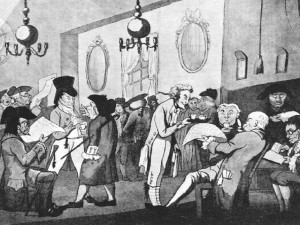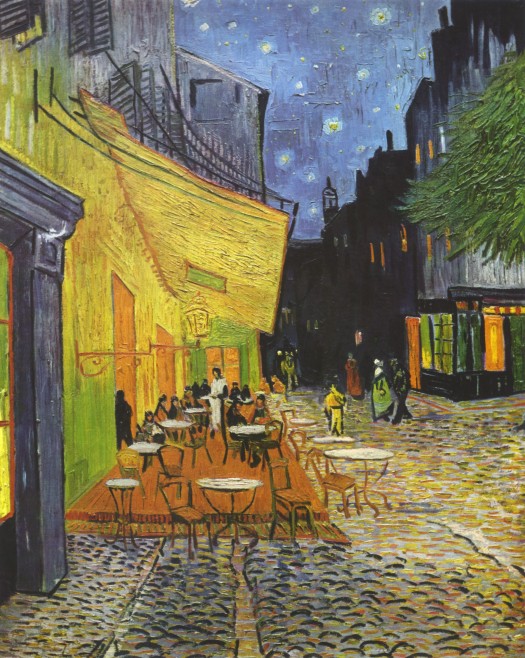A Placemaking Journal
When Coffee Came to London (Not a Starbuck’s story)
 Around 1650, coffee came to London. The refreshing and slightly habit forming beverage was a big hit. A new kind of non-alcoholic public house — the coffee house — was quickly invented.
Around 1650, coffee came to London. The refreshing and slightly habit forming beverage was a big hit. A new kind of non-alcoholic public house — the coffee house — was quickly invented.
London was a walking city, only the wealthy and businesses had personal transportation. And the weather was famously chancey. So a smart entrepreneur came up with a way of scouting locations.
He looked for groups of people transacting business on the sidewalk, and those became coffeehouse locations—that was one smart business strategy!

Image public domain from A History of Lloyd’s: From the Founding of Lloyd’s Coffee House to the Present Day by Charles Wright & C. Ernest Fayle, 1928
One day, he came across the largest of such outdoor gatherings at an informal market, the Docklands. Eavesdropping, he learned:
+ Who were they?
– Shipowners
+ What were they doing?
– Taking bets
+ On what?
– On whether their ship would come in or not
– With what they ordered
– On time or not
He figured, “A market!” And built them a large coffee house, which quickly ran out of room due to popularity. So he built a much bigger one in what’s now the City of London.
Over time, he put slate on the walls and quarto paper on the tables to record wagers. Soon, other innovations developed, such as sharing risk by signing your name under the proposed offering, a practice that came to be known as underwriting. And about 75 years later, Edward Lloyd’s descendants sold shares in the enterprise, now Lloyds of London.

Cafe Terrace at Night, September 1888, by Vincent van Gogh.
Image public domain, from The Yorck Project: 10.000 Meisterwerke der Malerei
Walkable urbanism fostered collective innovation and made markets (and a good drink) possible. Isn’t that what we’re about today?
The Latin verb credere means both to believe or to have faith in as does the English to credit and it also means to take a risk now in an expected future outcome. Isn’t that also what we’re about?
I remember being walked around an area of Palo Alto twenty years ago by a guy who had a lot to do with creating Silicon Valley culture. He was able to show me at which coffee houses and bars particular software and hardware schemes came to fruition.
That’s what plenty of local economic developers who understand today’s market demand for walkable urban places are hoping for. That’s what they have faith in. It’s also why Motorola Mobility moved its operations from north suburban Libertyville to Chicago’s Merchandise Mart, taking up two floors. And why American companies, from small to large, are gravitating to walkable downtowns, from small to large.
When your supply chain is in the realm of ideas and designs, walkable urban really counts.
–Scott Bernstein
Scott is Founder and Chief Strategy + Innovation Officer of The Center for Neighborhood Technology (CNT). The CNT is the national non-profit that has pioneered ways to quantify the advantages of linking transportation, land use and housing strategies with economic development and community affordability. It is the leading national provider of web-based analytic and data access tools for local area planning intended to meet the triple bottom line of improved quality of life, improved economic quality of place, and environmental resilience. CNT is a winner of the 2009 MacArthur Foundation Award for Creative and Effective Institutions, and Planetizen lists Scott Bernstein as number 27 in its poll identifying the Top 100 Urban Thinkers of the past century.
If PlaceShakers is our soapbox, our Facebook page is where we step down, grab a drink and enjoy a little conversation. Looking for a heads-up on the latest community-building news and perspective from around the web? Click through and “Like” us and we’ll keep you in the loop.


